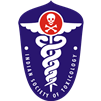Robbery or Assault by Stupefying Drugs : The New Indian Scourge
Keywords:
stupefaction; robbery; date rape; benzodiazepines; flunitrazepam; Datura; atropine; scopolamine; gamma hydroxybutyrate; GHB.Abstract
Of late, instances of innocent travellers on buses and trains being drugged by unknown co-passengers and then robbed of their belongings are steadily on the rise in various states of India. There are also instances of victims being approached by strangers at locations such as cinema theatres or hotels, and subsequently incapacitated by stupefying drugs, prior to being robbed or sexually assaulted. Such cases pose a real challenge to the attending physician when brought for treatment to the hospital, and to the investigating authorities such as the police, since most of the time the victims are dazed and confused upon arrival and even after recovery, and may not be able to recall the incident or the perpetrators clearly. This is the result of such drugs possessing the capacity to not only incapacitate the victim by rendering him or her suddenly unconscious or delirious (stupefaction), but also to cause disorientation and amnesia during the acute and recovery phases. In some cases these drugs have been misused even by the youth to facilitate what is now termed as “date rape”, i.e., taking a girl out on the pretext of a date, rendering her unconscious or helpless by mixing the drug in food or drink, and then sexually assaulting her in a secluded place. The same difficulties in proving the commission of the offence and prosecuting the culprit arise as in drug-facilitated robbery, owing to confusion and memory disturbances in the victim. Two typical cases are presented, followed by a brief discussion of the common drugs used in such offences, their mechanism of action, and their detection in body fluids, which can be of help in hospital management, and subsequent police investigation and prosecution.


